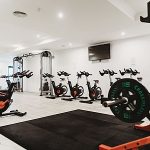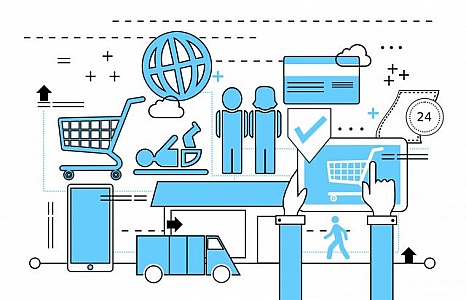In today’s dynamic business environment, office equipment is no longer confined to the mundane tools of the past. Instead, it has evolved into a sophisticated blend of technology, design, and sustainability that supports not only the day-to-day functions of an organization but also its strategic goals. As companies embrace hybrid work models, rapid digital transformation, and growing environmental concerns, investing in innovative office equipment is essential for fostering productivity, employee well-being, and long-term competitiveness.
Integrating Digital Intelligence
Modern office equipment is at the forefront of digital integration. Devices such as multifunction printers, advanced copiers, and interactive whiteboards now come equipped with connectivity features that enable real-time collaboration and data sharing. Smart sensors embedded in these devices monitor performance, signal when supplies need replenishment, and even predict maintenance needs, reducing downtime and administrative overhead. According to recent industry analyses, the incorporation of Internet of Things (IoT) technology into office equipment is transforming traditional workflows into agile, automated processes . This shift not only streamlines routine operations but also frees employees to focus on higher-value tasks, driving overall productivity.
Ergonomics: Designing for Health and Comfort
The emphasis on ergonomic design is another transformative trend in office equipment. With remote and hybrid work becoming the norm, employees are spending longer hours at their desks. As a result, ergonomic solutions—such as adjustable sit-stand desks, chairs with customizable lumbar support, and monitor arms—have become indispensable. These products are engineered to reduce physical strain, minimize the risk of musculoskeletal injuries, and enhance overall comfort. My own experience and observations confirm that when employees are physically comfortable, their concentration and productivity improve significantly. Companies that prioritize ergonomic investments are not merely upgrading furniture; they are actively cultivating a healthier work culture that supports long-term employee well-being.
Sustainability: The Green Imperative
Sustainability is no longer an optional add-on but a core component of office equipment design. Manufacturers are increasingly using recycled materials, energy-efficient components, and modular designs that facilitate upgrades rather than complete replacements. This eco-friendly approach reduces waste and minimizes energy consumption—a trend that resonates strongly with today’s environmentally conscious consumers and employees. For example, eco-certified printers and computers, designed to consume less power and be easily recyclable at the end of their life cycle, help organizations cut costs while reducing their carbon footprint . From my perspective, adopting sustainable office equipment is not only ethically responsible but also a smart business strategy that can yield substantial long-term savings.
Adapting to a Hybrid World
The rise of remote and hybrid work models has redefined the concept of the “office.” In this context, office equipment must be versatile and portable. Lightweight laptops, wireless peripherals, and compact docking stations enable employees to transition seamlessly between home and corporate environments. Furthermore, advanced video conferencing tools, noise-cancelling headsets, and digital collaboration platforms ensure that remote teams remain connected and effective, regardless of their physical location. This trend toward mobility and flexibility is pivotal; organizations that invest in portable and adaptive equipment are better positioned to navigate the uncertainties of today’s decentralized work culture .
Enhancing Security in a Connected World
As office equipment becomes more interconnected, cybersecurity has emerged as a critical concern. Modern devices must incorporate robust security features—from encrypted data transmission and secure boot processes to regular firmware updates—to protect sensitive information. With the increasing sophistication of cyber threats, it is essential that office equipment serves as a secure gateway to company data rather than a vulnerability. Proactive measures, such as integrating hardware-based security protocols and continuous monitoring systems, help mitigate risks and ensure that both employees and organizational assets remain safeguarded. A strong security framework in office equipment not only protects information but also instills confidence in employees, fostering a more resilient work environment.
Smart Equipment and Predictive Maintenance
One of the most promising developments in office technology is the advent of smart equipment equipped with predictive maintenance capabilities. Leveraging artificial intelligence (AI) and machine learning, these devices can analyze operational data to forecast potential failures before they occur. For instance, smart printers can alert IT departments when a component is nearing the end of its life, allowing for timely interventions that prevent costly disruptions. This data-driven approach enhances operational efficiency by minimizing unexpected downtime and optimizing resource allocation. From my viewpoint, the integration of AI in office equipment is a game-changer—it transforms reactive maintenance into a proactive strategy, ensuring that businesses run smoothly even in high-demand environments.
The Future of Office Equipment
Looking forward, the evolution of office equipment will likely continue at a rapid pace. We can expect to see even greater convergence between digital technology and physical design. Emerging trends, such as voice-activated controls, augmented reality (AR) interfaces for collaborative work, and even fully integrated smart desks, promise to redefine our workspaces further. As the boundaries between physical and digital blur, the office of the future will be characterized by seamless interactivity, real-time data responsiveness, and an emphasis on human-centered design.
Conclusion: A Strategic Imperative
In summary, the landscape of office equipment is undergoing a revolutionary transformation. The convergence of digital intelligence, ergonomic design, sustainability, portability, and robust security is not merely reshaping our tools—it is redefining the very nature of work. From smart sensors that automate routine tasks to eco-friendly materials that cut costs and conserve resources, modern office equipment is designed to meet the evolving needs of a diverse and dynamic workforce.
In my opinion, organizations that invest in cutting-edge, adaptable office equipment will not only boost productivity but also create healthier, more secure, and sustainable work environments. By future-proofing their equipment investments, businesses can remain agile and competitive in an ever-changing global landscape. The future of office equipment is bright, and those who embrace these advancements today will be the leaders of tomorrow .













